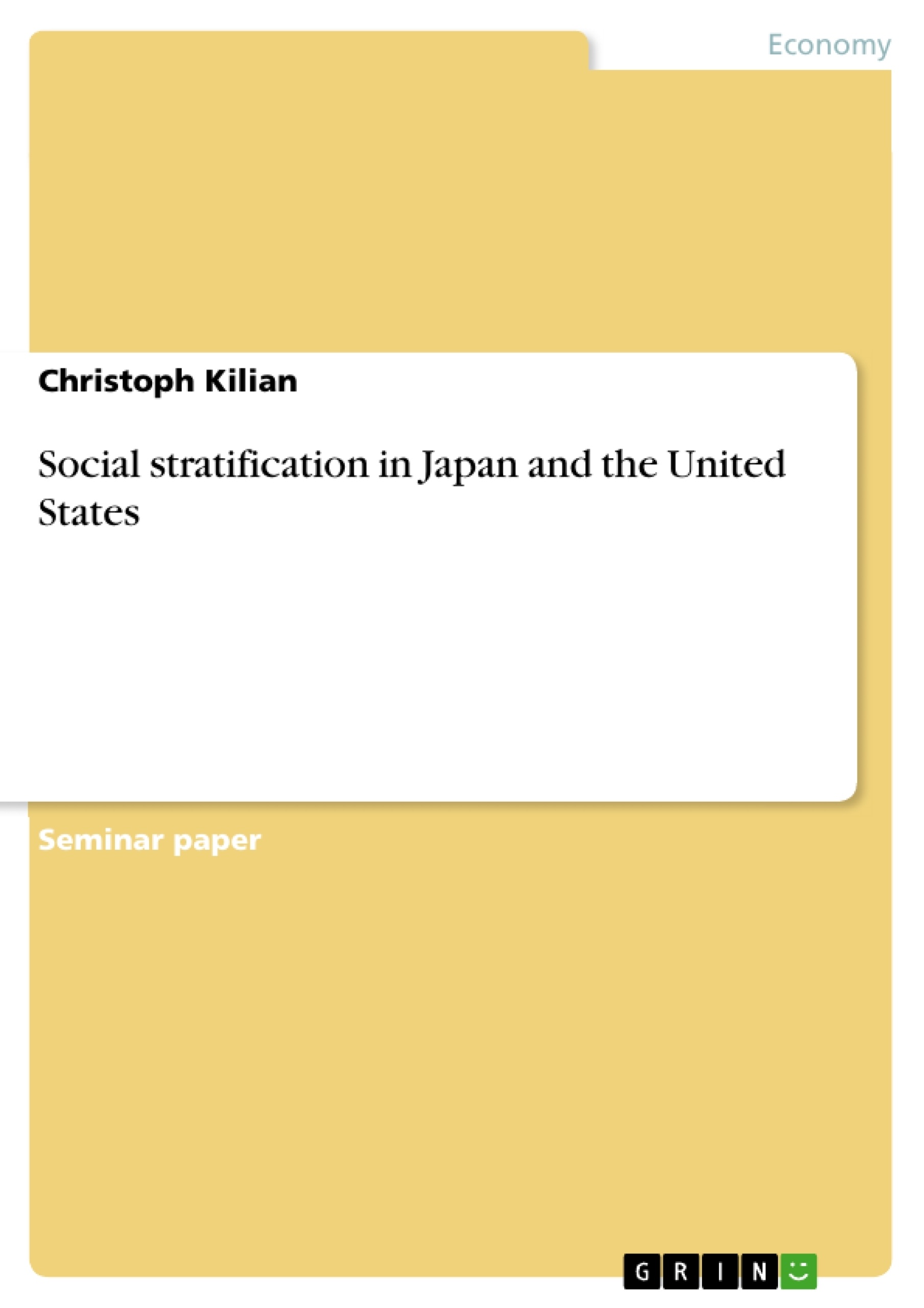Social stratification implies that in every society goods and services are not equally distributed. Some people are wealthy enough to buy a house, others have to pay rent to live in a small apartment. More generally spoken, why are some people rich and others poor? A society without social stratification implies that there are no inferior or superior positions and all human beings are equal and have the same prerequisites when they are born. The opposite is the case. People are born into families of unequal positions, some are born into rich influential families, others have to live under the poverty level. Wouldn’t it be fair for all human beings to have the same starting position when they are born? In every country the reality looks different and that is a reason why social stratification is such an interesting topic. To what extent have inequality and difference an impact on people’s life? Japan and the USA are both highly modernized and industrialized countries. According to World Bank, the USA has the biggest Gross National Product (GNP) in the world followed by Japan. This fact underlines the importance of both nations for the world economy. These figures get more interesting when they are put into relation with the population of each country. The figure “GNP per person” is a measurement for the wealth of a country. In this ranking the USA is in fourth place followed by Japan (Albrecht et al., 2003). These figures might give the impression that both countries are quite similar but there is one major difference. Japan is the only non-Western country that is industrialized. The cultural background is different and that is a reason why a comparison between these countries can be interesting and might lead to surprising results. In this paper I will try to find out what inequality is based on and why these differences occur of varying strength in both countries. In these countries social stratification depends on cultural aspects as well as economical aspects. The cultural background influences the way the society deals with economy. After giving an introduction about basic definitions and concepts of social stratification I will describe and analyse differences in income and education in both societies. To make a comparison useful and clear I will include data from the “Fischer Weltalmanach” and the “Human Development Report 2002” to this term paper.
Table of Contents
- Introduction
- Basic definitions and concepts of social stratification
- Social difference and inequality
- Ascription and achievement
- Systems of social stratification
- Income inequality in Japan and the United States
- Education system
- Education system of the USA
- Education system of Japan
- Future prospects
Objectives and Key Themes
This term paper aims to analyze the concept of social stratification and its manifestations in Japan and the United States, two highly industrialized nations. It investigates the factors contributing to social inequality, particularly focusing on income and education systems. The comparison between these two countries explores the impact of cultural background on economic development and social structures.
- Social stratification and its defining characteristics
- The role of social difference and inequality in shaping social structures
- The interplay between ascription and achievement in determining social positions
- Income disparities and their implications in Japan and the United States
- The influence of education systems on social mobility and opportunity
Chapter Summaries
The introduction defines the concept of social stratification and its relevance in understanding the unequal distribution of resources within societies. It highlights the disparity in wealth and social positions, posing questions about the fairness and impact of inequality on individuals' lives. The paper then focuses on Japan and the United States as case studies, considering their economic importance and cultural differences.
The second chapter provides a comprehensive overview of social stratification concepts. It differentiates between social difference and social inequality, explaining how social differences can be valued unequally, leading to hierarchical structures. It further explores the role of ascription and achievement in determining social positions, highlighting the inherent disadvantages associated with ascription.
Chapter three delves into the analysis of income inequality in Japan and the United States, comparing the economic prosperity and disparities within each nation. The fourth chapter examines the education systems of both countries, investigating how they contribute to social mobility and influence individuals' life chances.
Keywords
This term paper explores key concepts related to social stratification, encompassing social difference, inequality, ascription, achievement, income disparity, education systems, and cultural influences on economic development. It utilizes data from sources such as the "Fischer Weltalmanach" and the "Human Development Report 2002" to analyze the social structures and opportunities in Japan and the United States.
- Quote paper
- Christoph Kilian (Author), 2004, Social stratification in Japan and the United States, Munich, GRIN Verlag, https://www.grin.com/document/70514



